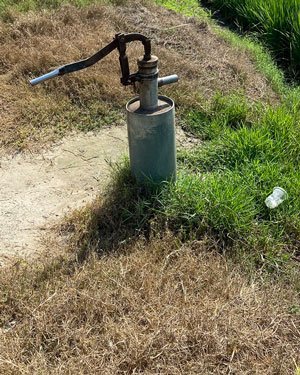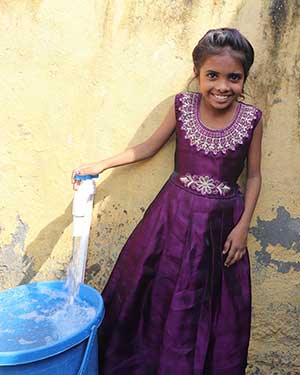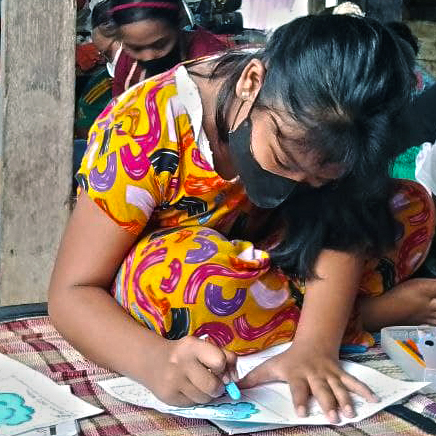Making unsafe water safe for children
We are often asked “is it safe drinking tap water in India”. No!
Children in our communities in India do not have safe drinking water in their villages. Some 3 in 10 people worldwide, or 2.1 billion, lack access to safe, readily available water at home, and 6 in 10, or 4.5 billion, lack safely managed sanitation, according to a new report by WHO and UNICEF.
The impact of this takes lives. Each day, more than 800 children die from this unsafe water. Death due to diarrhea carried fouled water, hygiene, and the resulting lack of sanitation. They do not have the basic requirements to wash their hands, cook food, bathe, grow crops or drink.!
What are the numbers
1,339,180,000 national population of India
21.2% live below poverty line which is defined as earning less that US$1.91 per day
9% of the rural population lacks access to water, our work is exclusively in the rural sector of India where the needs are greatest
46.76% of the rural population lacks sanitation.
India is home to around 33% of the world’s poor. And they face some of the hardest social gender and class discrimination.
What does it mean to not have safe water
It means that unless they walk many kilometers to collect buckets of water they must drink dirty polluted water they have access to. For most of us we go to the kitchen or bathroom and turn on the tap. But for millions that supply is reduced or non-existent. It impacts families and communities and can keep people locked in extreme situations for years or even generations.
When children are continually sick due to being more vulnerable to the effects of polluted or non-existent water, they can’t attend school. Women and girls are often the ones tasked with carrying water for the family so they are impacted in major ways too. UNICEF says 200 million hours are spent carrying water every day.
It's a problem that can be fixed
Most of us don’t even think when we turn on the tap to fill a glass or wash our dishes. It’s so natural, we do it many times every day.
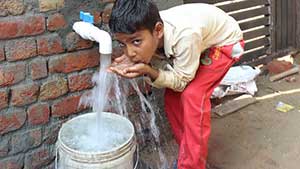
The World Bank says promoting good hygiene is one of the most cost-effective health interventions.
The benefits of providing clean water for the villages is not only connected to child health, safety and education. Every $1 invested in water and toilets returns an average of $4 in increased productivity. **
Just $2,800 means we can install a safe water bore and protect 1500 - 2000 people.
Most people think it’s much more than this.
Having access to clean safe water is everything in the process of building a safe living environment. It enables children to be well, food preparation to be safe, families and communities to practice better hygiene. It enables more children to safely go to school and get their education.
The bores go down to a depth of 122 meters (approximately 400 feet) to reach the safe water level. Anything less is potentially very polluted. These bores can change the situation for a whole village. We are providing safe drinking water for children and communities and this is saving lives, helping re-write children’s life stories and turning around futures.
So is it safe drinking tap water in India? It is if it’s from a Heart for Kids water bore.
You can help fix this problem
We have many villages asking for water bores. We just need to fund them. Your gift for safe water will enable us to dig another bore and turn the tap on so children do not have to walk many kilometers to collect buckets of water from neighboring villages. When they have clean safe water they won’t get sick and they won’t miss classes at their Child Education Centre
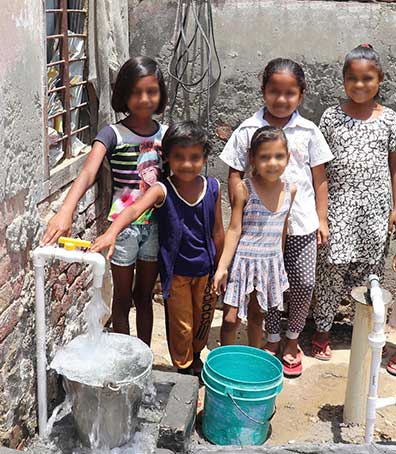
* World Health Organisation
* A WHO study in 2012 calculated that for every US$ 1.00 invested in sanitation, there was a return of US$ 5.50 in lower health costs, more productivity, and fewer premature deaths.*

